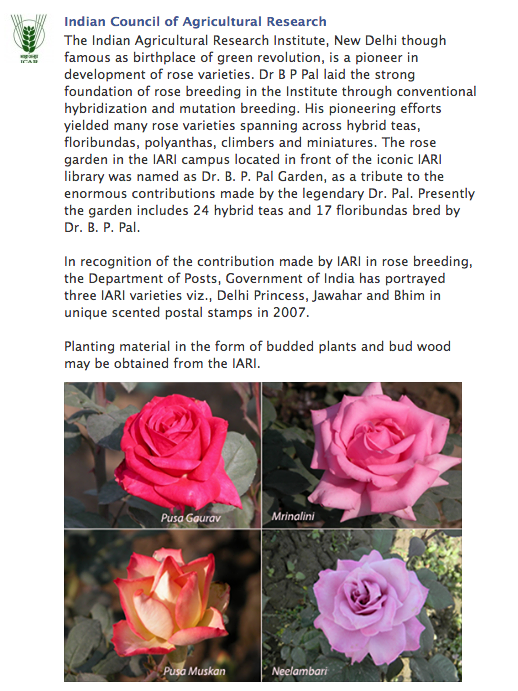- Latvia’s Tomato Rebellion: Nested Environmental Justice and Returning Eco-Sociality in the Post-Socialist Eu Countryside. The Man tries to enforce the European Common Catalogue, Latvians rebel.
- Traditional agricultural gardens conserve wild plants and functional richness in arid South Sinai. Wild plants survive in gardens, which thus combine diversity and utility.
- Analysis of a silkworm F1 hybrid with yellow cocoon generated by crossing two white-cocoon strains: Further evidences for the roles of Cameo2 and CBP in formation of yellow cocoon. What, are we expected to eat this thing now, what with its high carotenoid content and all?
- Genetic diversity and bottleneck studies in endangered Bhutia and Manipuri pony breeds. Bottleneck? What bottleneck?
- Analysis of the genetic diversity of radish germplasm through SSR markers derived from Chinese cabbage. New Korean radish varieties not same as old Korean radish varieties.
- Ethnobotanical study of anthophagy culture in mountainous area of Wenzhou. It pays to eat flowers.
- Enabling adaptation? Lessons from the new ‘Green Revolution’ in Malawi and Kenya. Adopting hybrids, and thereby escaping the “low maize productivity trap” is no guarantee that your thoughts will turn to crop diversification.
- Phytomorphological and Essential-Oil Characterization in situ and ex situ of Wild Biotypes of Oregano Collected in the Campania Region (Southern Italy). Both nature and nurture play a role. Look for high glandular and stomatal density.
- Diversity characterization and association analysis of agronomic traits in a Chinese peanut (Arachis hypogaea L.) mini-core collection. Can it really be down to just 15 alleles?
- Assessment of molecular diversity and population structure of the Ethiopian sorghum [Sorghum bicolor (L.) Moench] germplasm collection maintained by the USDA–ARS National Plant Germplasm System using SSR markers. High diversity, no structure, much duplication, little passport data.
- Crossability patterns within and among Oryza series Sativae species from Asia and Australia. Some easy, some difficult, all interesting.
Rose Revolution
So one of the many new things I learned during my recent trip to India, and which I thought would make a nice piece here, was that Indian breeders are hard at work improving ornamental flowers in general, and the rose in particular. Now, as luck would have it, ICAR has just posted something about this on its Facebook page, so I don’t even need to think of anything clever to write about it. I love it when that happens.
Nibbles: ICRISAT award, SIRGEALC awards, Food etymology, Black carrot, Bolivian potatoes, NASA weirdness, Mexican maize, Rice 2.0, Vaccinium
- Dr Upadhyaya Goes to Tampa.
- SIRGEALC participants get prizes too. Maybe one of them can tell us about it.
- First uses of various food words.
- Punjab Black Beauty set to take the carrot world by storm.
- Bolivia conserves its potato relatives. When will it ratify the ITPGRFA and share the love?
- NASA going to grow plants on the Moon. What could possibly go wrong.
- Free trade apparently threatens maize and Mexican culture. I personally think both can take it. They’ve been going for a while.
- You know, I just have no idea what this silly piece about rice in Africa is trying to tell me. Maybe you can figure it out and let me know.
- Celebrating the cranberry.
Nibbles: Papaya relatives, Agrobiodiversity monitoring, Orange breeding, Corn mutant, Cashew processing, Pecan pie, Communications history, Wheat research video, Agroforestry, Breeding, AG research in USA, Philippines typhoon, Eating insects, Indian blog, Open data, Microbes & wine, European databases, Afro-Indian Millet Alliance
-
As Jerry Seinfeld famously once said, I’m getting a little backed up here. Travel and work and, well, life, have conspired to keep me away from Nibbling for the past week and more, so apologies if what follows proves a little difficult to digest.
- The closest relative of the papaya looks nothing like a papaya. But will it be monitored, along with the rest of agrobiodiversity?
- We might have to look further afield than near relatives to save the orange. But closer to save corn.
- Cashews are bad? Say it ain’t so. And as for pecans…
- CGIAR comms guys (and it is all guys) reminisce about the good old days of agricultural research. And here’s an example, using wheat, of what they’re up to now. Nice shoutout for breeding and genebanks. Though of course it’s not just about the breeding.
- Crop improvement is one of six ways of feeding the world. Just. CGIAR comms guys probably on it. Barbara Schaal certainly is.
- IRRI maps rice areas affected by the recent typhoon. I did ask, and farmers there apparently mostly grow modern varieties. FAO provides more context.
- More insectivorous hijinks.
- Great new blog on chai wallahs.
- Big, open ag data will save us all. That sound you hear is the zeitgeist catching up. And the CGIAR is on it.
- You say terroir, I say microbes.
- Report on a descent into Genebank Database Hell, European Chapter. Ah, but it’s open.
- India reaches out to Africa, millets in hand.
Nibbles: Quinoa, Conference, Genebanks, Dietary diversity, Subsidies
- Peruvian quinoa leaves Bolivia in the dust – so that’s good for Bolivians who want to eat the stuff, right?
- At the forthcoming conference on Enhanced Genepool Utilization ‒ Capturing Wild Relative And Landrace Diversity For Crop Improvement “[a] book of abstracts will be provided on a flashdrive”. And here’s your jetpack …
- Global Crop Diversity Trust speaks truth to power. Power replies: “Yeah, yeah, we know all that.”
- Kids document traditional foodways of Kenya.
- Do farm subsidies increase or decrease food prices? Yes.
